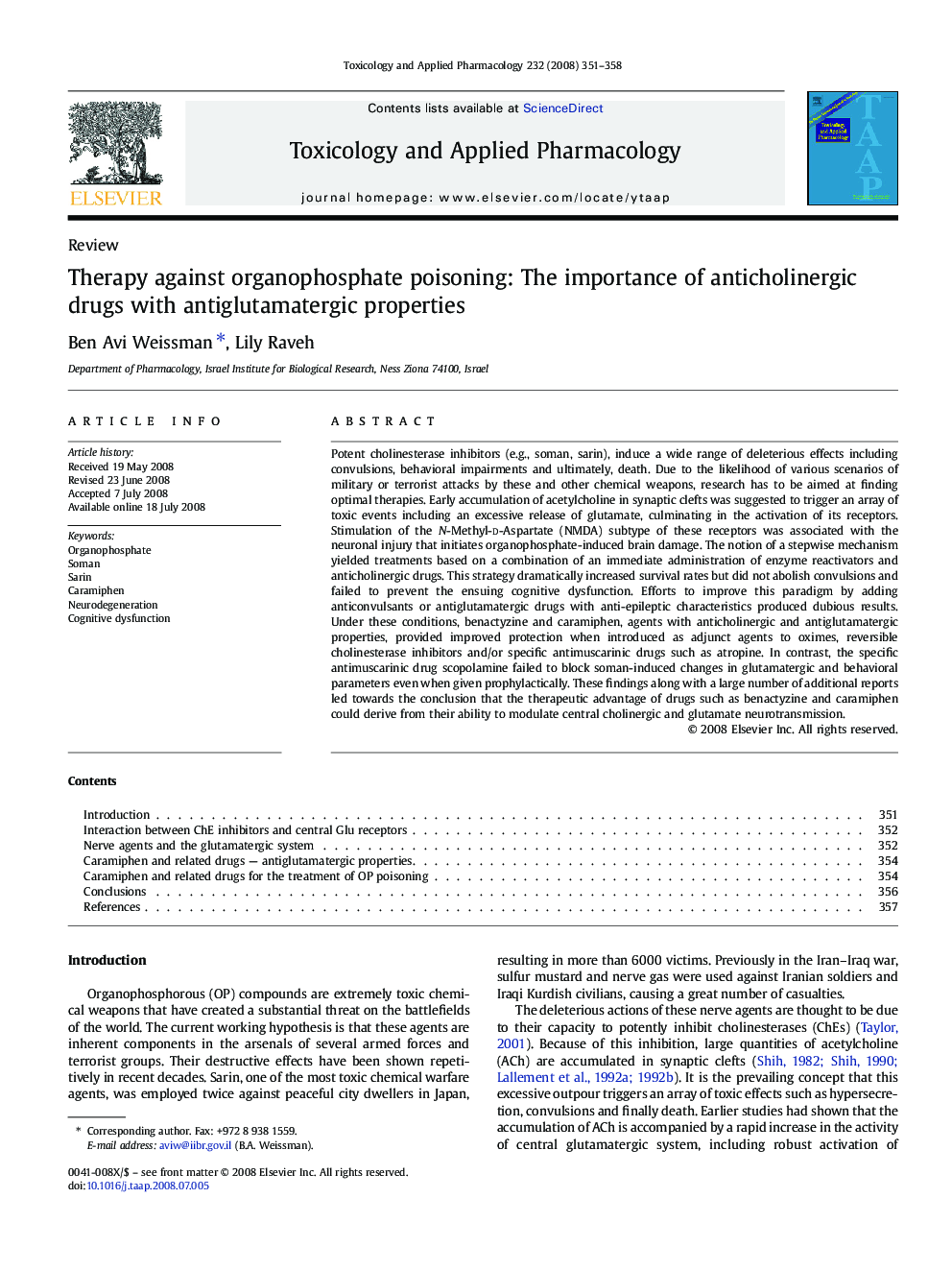| Article ID | Journal | Published Year | Pages | File Type |
|---|---|---|---|---|
| 2571139 | Toxicology and Applied Pharmacology | 2008 | 8 Pages |
Potent cholinesterase inhibitors (e.g., soman, sarin), induce a wide range of deleterious effects including convulsions, behavioral impairments and ultimately, death. Due to the likelihood of various scenarios of military or terrorist attacks by these and other chemical weapons, research has to be aimed at finding optimal therapies. Early accumulation of acetylcholine in synaptic clefts was suggested to trigger an array of toxic events including an excessive release of glutamate, culminating in the activation of its receptors. Stimulation of the N-Methyl-d-Aspartate (NMDA) subtype of these receptors was associated with the neuronal injury that initiates organophosphate-induced brain damage. The notion of a stepwise mechanism yielded treatments based on a combination of an immediate administration of enzyme reactivators and anticholinergic drugs. This strategy dramatically increased survival rates but did not abolish convulsions and failed to prevent the ensuing cognitive dysfunction. Efforts to improve this paradigm by adding anticonvulsants or antiglutamatergic drugs with anti-epileptic characteristics produced dubious results. Under these conditions, benactyzine and caramiphen, agents with anticholinergic and antiglutamatergic properties, provided improved protection when introduced as adjunct agents to oximes, reversible cholinesterase inhibitors and/or specific antimuscarinic drugs such as atropine. In contrast, the specific antimuscarinic drug scopolamine failed to block soman-induced changes in glutamatergic and behavioral parameters even when given prophylactically. These findings along with a large number of additional reports led towards the conclusion that the therapeutic advantage of drugs such as benactyzine and caramiphen could derive from their ability to modulate central cholinergic and glutamate neurotransmission.
